#old testatement
Explore tagged Tumblr posts
Text
“And the Lord said unto Gideon, By the three hundred men that lapped will I save you, and deliver the Midianites into thine hand: and let all the other people go every man unto his place.” -Judges 7:7
#christian bible#christian faith#christian living#faithinthebible#faithinchrist#faithinthefuture#faithingod#faithinjesus#faithinthelord#faithinyourself#holy bible#holy spirit#jesuschrist#lord jesus christ#love of christ#love of god#love of jesus#love of the lord#love of myself#new beginnings#new blessings#2024 new beginnings#2024 new blessings#old testatement#be better#be blessed#be courageous#be encouraged#be faithful#be fearless
1 note
·
View note
Text

From my understanding, the Tanakh (Jewish Bible) and the Old Testament are the same texts, albeit in a slightly different order. The differences come from the translation and the interpretation.
Setting aside religion for a moment, translation has always been a complicated art (and it is an art). To top it off, the Tanakh/Old Testament is a very, very old text, written in a long-dead language at a time when people lived radically different lives. There are words we can't translate definitively, there is context that can easily fly over our heads. Take, for example, the word tsa'arat, a disease described in Leviticus. Except we can't translate it as a specific disease, because the text gives multiple sets of symptoms which match multiple types of skin conditions. Alright, tsa'arat can't be translated as Disease X, but surely we can translate it to "skin disease," right? BZZT! The word is also applied to discolorations of clothing or housing (mold?). How are you supposed to translate this word?? And this is a relatively simple translation problem. Even if we don't have an English word that exactly matches tsa'arat, the detailed descriptions of the condition(s) make it easy for us to wrap our minds around it. But once you get into the more poetic, fantastical, and outright trippy sections, Shit Gets Weird and questions marks start popping up all over the place. Any scholar or translator of the text will tell you this, regardless of their religious background.
Then we get to the different interpretations, and, well, that's when things get really crazy. One of the other threads on this post mentioned that Christians interpret Lamentations as a tragic necessity on the path to Christ. It was mind-boggling, even outrageous to read that as a Jew. Lamentation is a shattering text of grief in Judaism, being the definitive depiction of HaGalut, the Exile. But once I got past the shock and thought about Christian theology and its sacred history...yeah, I can see it. Not for me--Lamentations-as-shattering-grief is very important to me for personal reasons--but I'm not the intended audience. Christians are. If Lamentations-as-a-stepping-stone-to-Christ gives meaning to them, by all means, you do you funky plus sign people.
quick question for the other jews out there, do you ever get irritated whenever you see the phrase "Old Testament God" used to describe something/someone as cruel, judgemental, severe, etc.? or is it just me?
3K notes
·
View notes
Text
Aziraphale’s secret investigation and overlooked Clues

Remember this frame from Good Omens S02E06? Apparently Aziraphale had been using the empty carton box brought by Jim to store things in. It became a new home to at least two out of three “Lost Quartos” — the supposedly lost Shakespeare plays briefly but hilariously mentioned in the Good Omens book — as well as a very mysterious legal document.

Thought probably half of the Good Omens analysts here, including the ever so wonderful @fuckyeahgoodomens, who managed to find some information about the deceased John Gibson from New Cumnock (1855 - 1905).
Unfortunately the most interesting thing about this early 20th century provincial postmaster was his youngest child James (1894 - 1973), a quite famous stage (West End!) and film actor immortalized on screen in The Master of Ballantrae (1962), Witch Wood (1964) and Kidnapped (1963).
After that particular discovery the fandom-wide search seemingly led nowhere and the topic died a premature death.

And I almost figured it out seven months ago.
“But Yuri, you’re so clever. How can somebody as clever as you be so stupid?”, you probably want to shout across a busy London street at this point. Well, let me tell you. Much like Aziraphale, I'm blindingly intelligent for about thirty seconds a day. I do not get to choose which seconds and they are not consecutive.
Only tonight the stars have aligned in an ineffable way.

For those of you who don’t follow this account, some time ago I’ve realized that John Gibson isn’t the only testator whose estate was being investigated by Aziraphale right before The Whickber Street Traders and Shopkeepers Association monthly meeting.
If you watch S2 finale closely enough, you should notice that Crowley not only stress cleans Aziraphale’s bookshop — he also goes through the books and papers on his desk between the last three angels leaving the bookshop and Maggie and Nina’s intervention. A seemingly permanent arrangement of the props post-shooting, visible in detail both on Radio Times tour and SFX magazine photo shoot, sheds even more light on this detail.



The close-ups published after S2 release are legible enough to refer us to a much more prominent historical figure, Josiah Wedgwood (1730 – 1795) — an English potter, entrepreneur and abolitionist. Founding the Wedgwood company in 1759, he developed improved pottery bodies by systematic experimentation, and was the leader in the industrialisation of the manufacture of European pottery.

Long story short, I transcribed the handwritten pages abandoned on Aziraphale’s desk, found out the source and the full text of what could be identified as Wedgwood’s last will and testament, took a walk to visit his Soho workshop, and proceeded to write a lengthy meta analysis about it.
I was today’s years old when I realized that there’s something else connecting those two dead British men.
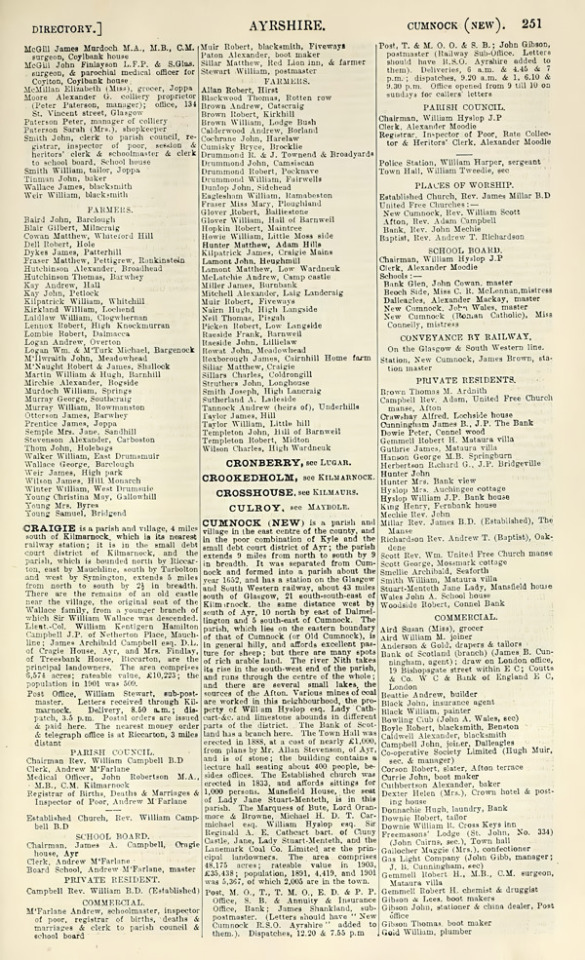

The Scottish Post Office Directory of 1903 recorded John Gibson from New Cumnock as a “stationer and china dealer” (above) operating from the shop located in the town’s post office building.
Indeed, a close look at his post office shop window in the Henderson Building (below, bottom left) reveals an artful display of fine china and pottery next to postcards printed by Gibson.

There are multiple ways to connect this surprising link with possible S3 plot points, obviously, but it’s getting late, so let’s just name the two most important ones.
You’ve probably heard of the Holy Grail, maybe from Monty Python or Good Omens S01E03 1941 flashback. Depending on the version of the story, if can be a cup, a chalice, a bowl, or a saucer — but almost always a dish or a vessel connected personally, physically and metaphysically to Jesus (unless you’re partial to Wolfram von Eschenbach’s idea that the Grail was a stone, the sanctuary of the neutral angels who took neither side during Lucifer's rebellion).
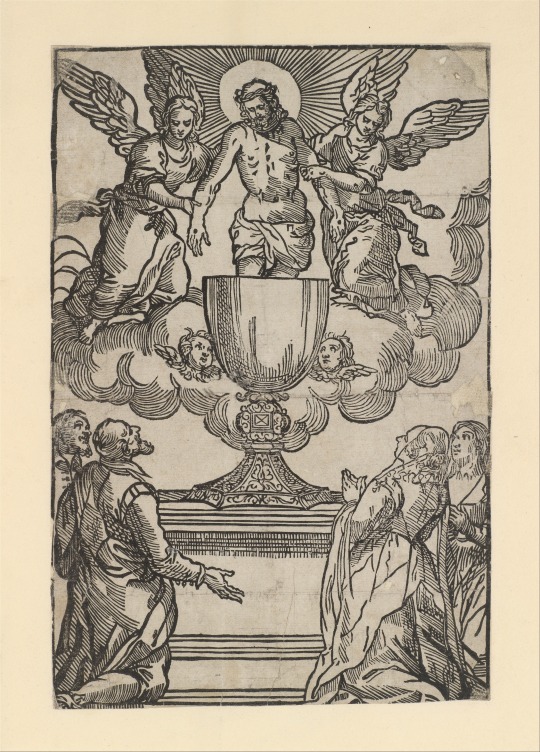
A slightly more obscure dish related to the Son of God appears in the sixteenth chapter of the Book of Revelation as a vital part of His Second Coming. The Seven Bowls (or cups, or vials) of God’s Wrath are supposed to be poured out on the wicked and the followers of the Antichrist by seven angels:
Then I heard a loud voice from the temple telling the seven angels, “Go and pour out on the earth the seven bowls of the wrath of God.” So the first angel went and poured out his bowl on the earth, and harmful and painful sores came upon the people who bore the mark of the beast and worshiped its image.
The second angel poured out his bowl into the sea, and it became like the blood of a corpse, and every living thing died that was in the sea.
The third angel poured out his bowl into the rivers and the springs of water, and they became blood. And I heard the angel in charge of the waters say, “Just are you, O Holy One, who is and who was, for you brought these judgments. For they have shed the blood of saints and prophets, and you have given them blood to drink. It is what they deserve!” And I heard the altar saying, “Yes, Lord God the Almighty, true and just are your judgments!”
The fourth angel poured out his bowl on the sun, and it was allowed to scorch people with fire. They were scorched by the fierce heat, and they cursed the name of God who had power over these plagues. They did not repent and give him glory.
The fifth angel poured out his bowl on the throne of the beast, and its kingdom was plunged into darkness. People gnawed their tongues in anguish and cursed the God of heaven for their pain and sores. They did not repent of their deeds.
The sixth angel poured out his bowl on the great river Euphrates, and its water was dried up, to prepare the way for the kings from the east. And I saw, coming out of the mouth of the dragon and out of the mouth of the beast and out of the mouth of the false prophet, three unclean spirits like frogs. For they are demonic spirits, performing signs, who go abroad to the kings of the whole world, to assemble them for battle on the great day of God the Almighty. (“Behold, I am coming like a thief! Blessed is the one who stays awake, keeping his garments on, that he may not go about naked and be seen exposed!”) And they assembled them at the place that in Hebrew is called Armageddon.
The seventh angel poured out his bowl into the air, and a loud voice came out of the temple, from the throne, saying, “It is done!” And there were flashes of lightning, rumblings, peals of thunder, and a great earthquake such as there had never been since man was on the earth, so great was that earthquake. The great city was split into three parts, and the cities of the nations fell, and God remembered Babylon the great, to make her drain the cup of the wine of the fury of his wrath. And every island fled away, and no mountains were to be found. And great hailstones, about one hundred pounds each, fell from heaven on people; and they cursed God for the plague of the hail, because the plague was so severe.
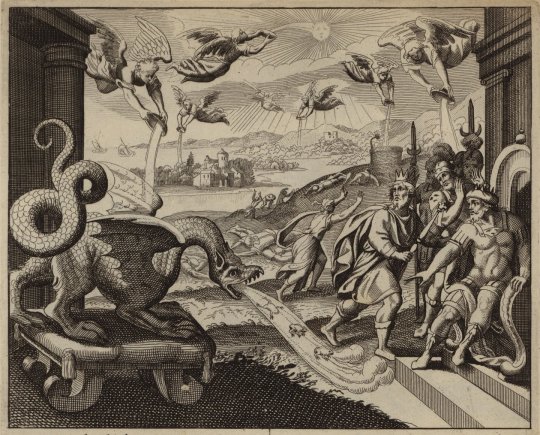
#good omens#good omens meta#good omens analysis#aziraphale#aziraphale’s bookshop#set design#good omens props#the good omens crew is unhinged#john gibson#josiah wedgwood#fine china#pottery#holy grail#seven bowls#second coming#yuri is doing her thing
93 notes
·
View notes
Text
Top 10 Ghost in the Shell Stand Alone Complex episodes
Number 10- SA: Runaway Evidence – TESTATION
One of the most trans coded stories in a franchise with a lot of trans coded themes, I mean have you read the lyrics to the song from this episode Beauty is Within Us? It's just in the text at that point. Very emotional episode that made me cry a lot more on recent viewing.

Number 9- SA: Tachikoma Runs Away; The Movie Director's Dream – ESCAPE FROM
An episode split in 2 halves. The first being a Tachikoma development episode that gets surprisingly emotional. And the second being a subtle development episode for the Major with a very cyberpunk premise as we see just how mentally powerful she is.

Number 8- DU: Abandoned City – REVERSAL PROCESS
For a character that is so confident in herself and rock solid in her resolve, at least in Stand Alone Complex, this is one of the few times where we see the Major shook. Batou's reassurance is sweet though and also answers the question of why so many people follow Kuze as well, strengthening the parallels between them. Batou's philosophy talk with Gouda with the help of linking with Major's big brain is great. Boma does something.
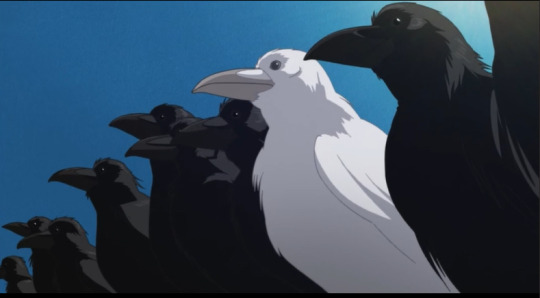
Number 7- IN: The Day the Bridge Falls – MARTIAL LAW
The Major and rest of Section 9 deciding to break off from Government orders and go on their own mission to help save the refugees is really suspenseful. The highjacking of the chopper while Gouda makes his own moves and the Major warning Kuze just in time through brain connection while one of the best songs Torukia plays is super hype. I also like the conversation where Kuze literally talks to that old guy about Communism and also that old very much feeling like his version of Aramaki and I think even having the same VA? Again emphasizing the parallels between the Major and Kuze.

Number 6-C: The Copycat will Dance – MEME
*Monsoon has entered the chat*, seriously though this a great episode that explores the concept of memes, copy cats and how something becomes an icon as we really dig into the Laughing Man case. That final scene with the Major and Aramaki with that sunset lighting while Velveteen plays is real good.

Number 5- IN: Return to Patriotism – ENDLESS∞GIG
Beautiful but somber ending to an incredible show. The Major siding with Kuze and trying to save the refugees in her own way was awesome. The steaks have literally never been this high. I mentioned this in another post but I appreciate GITS not pulling any punches in it's accurate portrayal of the american government being as vile as they are, causing violence in other countries so they can call themselves heroes. The Tachikomas once again sacrificing themselves to save the day. Both Torukia AND I Do playing. The Major giving that genocidal right wing politician Gouda the most satisfying comeuppance that real life evil politicians should be getting. But then the Major not being able to save Kuze and the mellow ending of stopping the immediate conflict while certain issues still persist, and Christmas in the Silent Forest playing for the final credits. Beautiful but sadly realistic ending.

Number 4-DU: Natural Enemy – NATURAL ENEMY
Great episode to really kick off the main plot of 2nd Gig. It manages to introduce us to our main antagonist of the season, the vile but memorable master manipulator Gouda. The main conflict with the discrimination and poor treatment of refugees leading to heightened tensions. And the scene of Major leading her team in the Tachikomas to stop the rouge AI controlled choppers while one of the hypest but most beautiful songs Cyberbirds plays is one of the greatest action scenes in the entire show, especially the ending of Major getting out of the shot up Techikoma to hold down the chopper herself to give Saito a clear shot.

Number 3- DI: Beware the Left Eye – POKER FACE
The only time that we ever get to witness the Major and her team when they were in the military. Told through the framing device of Saito telling this story to his poker friends, we see how the Major and Saito first met on the battlefield in an intense sniper duel. It's one of best fight scenes in the entire show and what I love about it so much is that is manages to so much while not a lot is physically happening, it's all a super intense 4D chess mind game until the sudden ending where Major makes her move and we see how Saito lost his eye. Good backstory and cool fight scene that demonstrates just how scary facing down with the Major is, as well as making Saito a little more interesting.

Number 2- C: Left-Behind Trace – ERASER
The ramp up of the Laughing Man Case as we head into the endgame of 1st Gig. The Major showing concern for squshiest boy Togusa and being the protective parent of her team was very sweet. The final action scene where she takes on a big mech, all on her own in a fight that is very purposefully reminiscent of her fight against the Spider Tank in the original Oshii film is incredible. And the moment where she hulks the fuck out and demands Saito bring over the big ass anti armor rifle that she wields with one hand gives me chills every time. A nice detail I like is how it looks like her Ghost leaves her Shell for a moment when the mech almost crushes her head and the intense anger she feels afterwards probably being because she almost never feels that helpless and is ready to bring down the pain on anyone that makes her feel that.

Number 1- IN: Grass Labyrinth – AFFECTION
The most backstory the we ever get for the ever enigmatic but inspiring Major Motoko Kusanagi. I love the surreal vibes of the set up as she finds the antique store and what are original prosthetic bodies of herself of Kuze. The story that old lady tells, not knowing that one of those prosthetic bodies used to belong to the person she's talking to is beautiful. Where we learn more about just how young the Major was when she had get a full prosthetic body, why she had to get it, how she lost her parents and even how she knows Kuze. The Major being such an inspiration to someone even at such a young age is beautiful. And I love how this trip down memory road eases her up on the new recruits, because no body is perfect when they are new at something. Even Batou couldn't trail her. A beautiful episode and another one that always makes me cry.
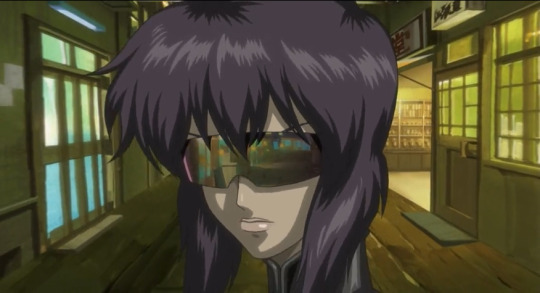
8 notes
·
View notes
Text


𓏲ּ ֶָ 𝑤𝑒𝑠𝑡𝑒𝑟𝑜𝑠𝒕𝒗 ⁝ sam reid, 40, cis man, he/him. announcing the arrival of TYWELL of house LANNISTER, the RULING LORD of CASTERLY ROCK. whispers among the court name them to be both SHREWD and ACERBIC in disposition, and those closest to them speak to their interests in equestrianism. if we bards could compose a song for them, it might tell stories of high cliffs overlooking harsh waves that break upon the rocks below, golden hair pressed to the brow by a crown, scarlet letters tucked beneath silk sleeves. the seven whisper to their most devout queen as she sleeps, making her question where their loyalties truly lie. are they right to whisper? for their loyalties truly lie with THE LANNISTERS.
⸻ statistics .
full name : tywell lannister . also known as : ty . title(s) : ruling lord of casterly rock and the westerlands . age : forty . date of birth : june 3rd . gender and pronouns : cis male he/him . orientation : bisexual .
⸻ roots .
parents : d. jason lannister + d. mama; dowager lady marya . siblings : tbd twin, lady lucretia, lord lyonel . children : tbd . status : married to ruling lady gwynesse lannister
⸻ personality .
inspired by : moriarty (sherlock homes) ; thee tywin lannister, logan roy (succession ... sorry) , phyllis dietrichson (double indemnity), small touch of testat (iwav) . moral alignment : lawful evil (pending tbh) . star alignment : gemini <3
⸻ headcanons .
so alike his much fabled kin, tywell operates with a slight and careful hand -- he is not interested in being the face of power, rather he wishes to be the long arm which pulls the strings. eloquent, flattering, smiling and charming, tywell will flatter any man or woman to their face; he will break bread with his enemies, and betray no hint of his true aims. a golden first born son, tywell has never considered himself anything less than the summation of the greatest parts of a lannister legacy --- he's blonde he's rich, he's bound to be slightly narcissistic ! tywell seeks power, but he does not wish to repeat the mistakes of past lannisters ; his proximity to the throne and the control he wields must be subtle, and he must not declare loyalties too loudly, too fiercly. the survival of their family will depend on their riches, their cunning, and the ability to distance oneself, should the tides turn. his loyalty remains with his kin, first and foremost -- family is everything, and he would see a city awash in blood, to aid his golden brood. but sweet sentiments and bonds cannot sever tywell's schemes; tywell will expect his family to accept his orders with a smile -- tywelll harbours great plans for his siblings, and heirs
⸻ wanted connections .
1. allies, allies ; perhaps forged through marriage, or through lannister coin to fund expeditions or small conflicts, those tywell works hard to maintain positive contacts with. these are known allies, and tywell is ready to appear their dearest and nearest friend. likely, they don't fully trust him -- and tywell trusts no one. they do however enjoy an amicable relationship; he's a lively dinner guest and loves to gossip
2. a secret alliance -- tywell is not one to limit his scope of influence, or the information he can recieve from the most unlikely of sources; i'd LOVE for him to have secret alliances --- maybe they exchange information on mutual enemies, he secretly supports their acts, money, etc etc! on the surface, an unlikely pair to have common goals.
3. enemies, of course -- the lannisters are proud, and tywells' smugness, combined with his false flattery, certainly makes him a polarizing figure; i'm down for petty disagreements, old feuds, personal vendettas. tywell probably isn't happy unless he's actively working to take down somebody
4. personal affairs -- tywell may be a lot, but he isn't above friendship, perhaps past entanglements (pre-marriage!!!!), friends he's lost, enemies that were once friends, anything !!!
3 notes
·
View notes
Text
How to Choose the Right Attorney for Your Last Will and Testament
Estate planning isn’t only about wealth—it’s about making sure your final wishes are honored and your loved ones are protected. Drafting a last will and testament is one of the most essential legal steps in this process. But with so much at stake, choosing the right legal counsel is crucial. From local laws to complex family dynamics, a skilled estate attorney can ensure your documents are enforceable and aligned with your goals.
Why You Need a Last Will Lawyer Arlington VA
Navigating state-specific probate laws is no small task. A last will lawyer arlington va brings localized legal insight and ensures your estate plan complies with Virginia statutes. Whether you’re a long-time resident or recently relocated, having someone familiar with local court procedures can simplify the process and reduce the likelihood of your will being contested. They’ll help identify potential issues before they arise and structure your plan to meet your exact needs.
What a Will and Testament Attorney Can Do for You
Working with a will and testament attorney offers more than just document drafting. These professionals provide strategic guidance on asset distribution, guardianship appointments, and tax implications. They’ll help you consider the implications of specific bequests and ensure your estate is distributed efficiently. Beyond just completing paperwork, they’ll guide you through every step—clarifying legal terms, offering options, and keeping your wishes at the center of the process.
How a Wills Lawyer Helps Prevent Family Disputes
Disagreements among heirs often arise when instructions aren’t clear. A well-prepared will, crafted by an experienced wills lawyer, minimizes confusion and reduces the risk of litigation. An attorney can use precise language to avoid ambiguity and address common scenarios, such as simultaneous death, estranged relatives, or blended families. These legal safeguards not only protect your assets but also preserve family harmony during a difficult time.
Understanding the Role of Last Will Attorneys in Complex Estates
If your estate includes business interests, out-of-state property, or unique assets like intellectual property, working with last will attorneys becomes even more important. These professionals are adept at managing high-value or nontraditional assets. They coordinate with financial advisors, accountants, and other specialists to create a plan that’s legally sound and financially efficient. They can also help establish trusts or other vehicles to avoid probate or limit estate taxes.
Why Last Will and Testament Lawyers Focus on Legal Precision
Precision is key in estate planning. Last will and testament lawyers are trained to structure documents that hold up under legal scrutiny. This includes ensuring proper witness signatures, notarization, and compliance with local law. They’ll also include clauses that address contingencies, such as if a named beneficiary predeceases the testator. With their help, your will won’t just reflect your intentions—it will be legally enforceable when the time comes.
When to Consult Last Will and Testament Attorneys
Life events often prompt people to seek out last will and testament attorneys—marriage, divorce, the birth of a child, or a serious health diagnosis. However, it’s never too early to plan ahead. These attorneys can help you update outdated documents, revoke old wills, and align your estate plan with current laws. Establishing a will while you're healthy and clear-headed ensures your wishes are recorded accurately and legally binding.
Having a valid and carefully drafted will is one of the most important legal actions you can take. With the right legal guidance, you can avoid probate pitfalls, reduce stress on your loved ones, and leave a legacy that reflects your values and intentions.
0 notes
Text
Covenants and Testaments
But this shall be the covenant that I will make with the house of Israel; After those days, saith the LORD, I will put my law in their inward parts, and write it in their hearts; and will be their God, and they shall be my people. (Jeremiah 31:33 Webster) For this is my blood of the new testament, which is shed for many for the remission of sin. (Matthew 26:28 Webster) In that he saith, A new covenant, he hath made the first old. Now that which decayeth and groweth old is ready to vanish away. (Hebrews 8:13 Webster)
Question 1. How many times does the word "Testament" appear in the Old Testament? 0 Question 2. How many times does the word "Testament" appear in the New Testament? 14 Question 3. How many times does the word "Covenant" appear in the Old Testament? 272 Question 4. How many times does the word "Covenant" appear in the New Testament? 21 Question 5. How many times does the word "Covenant" appear in the Gospels? 1 Question 6. How many times does the word "Covenant" appear in Hebrews? 14
"Why all the questions?" you may ask. Strangely, we do not ever see the word "Covenant" being used by Jesus. The other thing is that the one book addressed specifically to Hebrews contains the most references to the term, all of them explaining what Jesus did in bringing the New Covenant. Yet, Jesus always used the word "Testament". For sure, the only time He used it was at the Last Supper where he instituted Communion - a remembrance meal. Why does Jesus call what He came to do a Testament and not a Covenant? Is there a difference between the two words? What is the difference? We already know what a Covenant is as we have defined this word already, however, let me give an extended definition using the definition from Webster's 1828 dictionary, but applying it to what we have learned. A Covenant is an agreement between two parties to work together on an issue or to make peace between them. The Covenant is usually mediated by a neutral third person who goes between the two parties stating the terms of the agreement ensuring they both understand and agree to the terms. The ceremony is usually witnessed by others. A Covenant often has a symbol or sign connected with the covenant. A common example of a covenant is a marriage where the rings are the symbol. As defined by Webster's 1828, a Testament is "A solemn authentic instrument in writing, by which a person declares his will as to the disposal of his estate and effects after his death. This is otherwise called a will. A testament,to be valid, must be made when the testator is of sound mind, and it must be subscribed, witnessed and published in such manner as the law prescribes." Clearly, two vastly different legal documents, one an agreement, the other a final wish as to how his estate is to be wound up. Author of Hebrews understood "For where a testament is, there must also of necessity be the death of the testator." (Hebrews 9:16 Webster). Those that are mentioned in the Testament are considered "heirs" and they inherit something from the estate. "And if ye are Christ's, then are ye Abraham's seed, and heirs according to the promise." (Galatians 3:29 Webster) "In whom also we have obtained an inheritance, being predestinated according to the purpose of him who worketh all things after the counsel of his own will:" (Ephesians 1:11 Webster). We can see that the New Testament is replete with the language of a will or testament. Yet, the prophets spoke of a New Covenant that was going to come. for example: "Behold, the days come, saith the LORD, that I will make a new covenant with the house of Israel, and with the house of Judah: Not according to the covenant that I made with their fathers in the day that I took them by the hand to bring them out of the land of Egypt; which my covenant they broke, although I was a husband to them, saith the LORD: But this shall be the covenant that I will make with the house of Israel; After those days, saith the LORD, I will put my law in their inward parts, and write it in their hearts; and will be their God, and they shall be my people." (Jeremiah 31:31-33 Webster) At this point, I will say I find this all interesting. Not totally earth shattering. But when I realised that "Covenant" was virtually unused in the New Testament, that was kinda weird to me, yet it made total sense too. Hang in with me. There is still an entire Old Testament to learn in order to gain understanding of this last Covenant. I am taking quite a while, but I think it necessary. Father I pray that as we look at this Covenant that you give us clarity. Help us understand what has happened. Thank you that we are inheritors of the Testament of Christ.
0 notes
Text
Understanding the Last Will and Testament in the Philippines
“Failing to plan is planning to fail.” This adage holds true when it comes to estate planning. A well-crafted last will and testament Philippines ensures your wishes are honored, minimizes disputes, and provides clarity for your loved ones during difficult times. In this guide, we’ll explore the essentials of creating a valid will under Philippine law, offering practical advice to help you take control of your legacy.
What Is a Last Will and Testament?
A last will and testament is a legal document that allows a person, known as the testator, to dictate how their estate will be distributed after their death. It serves several critical purposes:
Asset Distribution: Specifies who inherits your property.
Executor Appointment: Names individuals responsible for implementing the will.
Guardianship Provisions: Assigns guardians for minor children.
Without a valid will, your estate may be settled through judicial intestate proceedings, where Philippine law determines asset distribution—potentially against your wishes. Learn more about drafting a last will and testament Philippines.
Types of Wills in the Philippines
1. Holographic Will
A holographic will is entirely handwritten, dated, and signed by the testator. It does not require witnesses, making it simpler and more private. However, any changes must also be signed to maintain validity.
2. Notarial Will
A notarial will requires formalities such as attestation by three credible witnesses and notarization. Each page must be signed by the testator and witnesses, ensuring authenticity. This type offers greater legal protection.
Legal Requirements for a Valid Will
To create a valid will Philippines, you must meet these requirements:
Testamentary Capacity: The testator must be at least 18 years old and of sound mind.
Compliance with Formalities: Depending on the type of will:
Holographic wills must be handwritten, dated, and signed.
Notarial wills require signatures from witnesses and notarization.
Respect for Compulsory Heirs: Philippine law reserves portions of the estate for compulsory heirs (e.g., children and spouse). Failure to allocate these shares can invalidate the will.
Steps to Drafting Your Last Will and Testament
Step 1: Inventory Your Assets
Make a detailed list of all properties—real estate, bank accounts, investments—to ensure nothing is overlooked.
Step 2: Choose Beneficiaries
Decide who will inherit your assets. You may include family members, friends, or charities.
Step 3: Appoint Executors
Select trustworthy individuals to manage your estate and carry out your wishes.
Step 4: Consult a Lawyer
While holographic wills can be created independently, consulting a lawyer ensures compliance with Philippine law and avoids disputes during probate.
Step 5: Execute Your Will
Follow the required formalities based on whether you are drafting a holographic or notarial will.
For more details on crafting a will Philippines, visit this resource.
Probate: Enforcing Your Will
After your passing, your last will and testament Philippines must undergo probate—a court process that validates the document. Probate ensures:
The authenticity of the will.
The testator’s testamentary capacity.
Compliance with Philippine succession laws.
Why You Should Act Now
Creating a valid last will and testament is not just about distributing assets; it’s about ensuring peace of mind for yourself—and harmony among those you leave behind. Whether you opt for a holographic or notarial format, adhering to legal requirements is crucial for enforceability.
0 notes
Text
Faith for Inheritance
If your rich uncle wrote you in his will and you were to receive all of his possessions as your inheritance, would you think you were going to receive that when you died?
No, you wouldn't receive it after you died. You would receive it after he died.
So many believers have been deceived into believing they are going to receive their inheritance after they die.
But we are joint heirs with Jesus. A testament is in force after the testator has died. When he dies, then you receive the inheritance—not when you die.
Well, Jesus has already died, and we have received our promised inheritance. But in order to enforce the will, we must mix faith with those promises. What would we think about an individual who said, "Well, my rich uncle has willed all of his land, all of his riches to me. He has millions of dollars worth of investments, and it will be all mine! Oh, I just can hardly wait until I die so I can get this inheritance!"
You would want to know where he went to school.
Well, we've been thinking that way for years when it comes to our spiritual inheritance. The devil has conned us into believing that our inheritance is afar off. But our inheritance becameavailable when Jesus died—not when we die.
We Are No More Strangers But Citizens
Now back to Hebrews eleven, where it says, These all died in faith, not having received the promises, but having seen them afar off, and were persuaded of them, and embraced them, and confessed that they were strangers and pilgrims on the earth. (v. 13) This is what they confessed under the old covenant. But we have a better covenant, and it is established on better promises.
Now therefore ye are no more strangers and foreigners, but fellow citizens with the saints, and of the household of God. (Ephesians 2:19)
Because of what Jesus did, we are no more strangers or foreigners, but fellow citizens. Our citizenship is of heaven now. Romans 8:17 tells us we are joint heirs of Christ. So we have it much better under the new covenant.🎻Charles Capps
0 notes
Text
Trusted Will Writing Services in Dubai
Planning for the future is important, and writing a will is one of the best ways to protect your assets and loved ones. If you live in Dubai, having a legally valid will ensures that your money, property, and personal belongings go to the right people after your passing. Will writing is a simple but essential process that provides peace of mind for you and your family. Without a proper will, your assets could be distributed according to UAE law, which may not align with your wishes.
Many residents are unaware that non-Muslims can create wills through the DIFC Wills Service Centre or the Dubai Courts. With professional guidance, you can complete the will registration process smoothly. Whether you own property, a business, or investments in Dubai, drafting a clear and legally sound will is vital. At willsdubai.ae, we offer expert services to help you make a will in Dubai with ease. Our team ensures your documents meet all legal requirements and are properly registered.

In this guide, we will explore everything you need to know about will writing, will registration, and wills in Dubai.
Why You Need a Will in Dubai
Having a will is crucial for everyone, especially expatriates in Dubai. Many people assume that their assets will automatically pass to their family, but UAE law follows Sharia principles for inheritance. Without a registered will, your assets may not be distributed as you intended. This is why it is essential to consider professional will writing services to protect your interests.
A will is not only about distributing assets; it also ensures the care of your minor children. If you have children, you can name a legal guardian in your will, preventing any legal issues in case of an unfortunate event. By using willsdubai.ae, you can ensure that your will is legally sound and provides full protection.
When you make a will in Dubai, you get to choose who will inherit your assets. This is particularly important for expatriates who want to ensure their assets go to their spouse, children, or loved ones. Without a will, the government will decide how your estate is divided. Wills registration is a simple process that can give you complete control over your assets.
The Process of Will Writing and Registration in Dubai
Writing and registering a will in Dubai involves several important steps. Many people assume that creating a will is complicated, but with the right guidance, it can be done quickly and efficiently. Here is a simple step-by-step guide to will writing and will registration in Dubai:
1. Understanding Legal Requirements
Before you start writing your will, it is important to understand the legal framework. Non-Muslim expatriates can register their wills through the DIFC Wills Service Centre or Dubai Courts. Wills in Dubai must meet specific legal requirements to be considered valid:
The testator must be at least 21 years old.
The will must be written and signed in front of witnesses.
The will should clearly mention asset distribution and legal guardianship (if applicable).
2. Drafting Your Will
Once you understand the legal requirements, the next step is drafting your will. Many people choose to work with professional services like willsdubai.ae to ensure accuracy and compliance with local laws. A well-drafted will includes:
A clear list of your assets (property, bank accounts, business shares, etc.).
Names of beneficiaries (spouse, children, relatives, or charities).
Appointment of an executor to manage the estate.
Guardianship details for minor children (if any).
3. Choosing the Right Registration Process
After drafting the will, it must be registered with the right authority. There are two main options for will registration in Dubai:
DIFC Wills Service Centre: Ideal for non-Muslim expatriates, providing a common law-based system.
Dubai Courts: Suitable for both Muslims and non-Muslims, with wills translated into Arabic.
4. Signing and Storing Your Will
The final step is signing the will in front of witnesses and storing it in a safe place. You should inform your family or executor about the location of the will to ensure it is easily accessible when needed.
Choosing the Right Will Writing Service in Dubai
Selecting the right will writing service is crucial for ensuring that your will is legally valid and properly registered. Many service providers offer will writing and wills registration, but it is essential to choose a trusted company with expertise in Dubai laws.
At willsdubai.ae, we provide professional will writing and will registration services. Our experienced team ensures that your will meets all legal requirements and is registered with the appropriate authorities. Whether you need a simple will or a complex estate plan, we guide you through every step of the process.
By working with a trusted service provider, you can ensure:
Compliance with UAE laws.
Proper documentation and registration.
Secure storage of your will.
Peace of mind for you and your family.
Common Mistakes to Avoid When Making a Will in Dubai
Many people make mistakes when they make a DIFC will registration in Dubai, which can lead to legal complications. Here are some common errors to avoid:
Not registering the will: An unregistered will may not be recognized by the courts.
Using unclear language: Ambiguity can lead to disputes among beneficiaries.
Not updating the will: Life changes such as marriage, children, or new assets require will updates.
Not appointing an executor: Without an executor, the legal process may become complicated.
Ignoring legal advice: Consulting a professional service ensures legal compliance.
Avoiding these mistakes can help ensure a smooth inheritance process and protect your loved ones from legal difficulties.
Conclusion
Writing a will is one of the most important steps in planning for the future. Whether you are an expatriate or a UAE resident, having a legally valid will protects your assets and ensures your family’s security. Will writing, will registration, and wills in Dubai are essential to prevent legal complications and disputes.
At willsdubai.ae, we provide expert will writing and wills registration services to make the process easy and stress-free. If you want to make a will in Dubai, contact us today to ensure your wishes are legally protected.
For more information, visit companysetupsaudiarabia.com and learn more about estate planning and legal services in Dubai.
#wills#wills dubai#will register#will writing#will#business#dubai wills#will registration#will registrations#wills registration
0 notes
Text
considering the amount of iwtv i get on my dash, its a testatement to the quality of the blogs i follow that today was the first time i encountered daniel fanart where it was clear the artist only had experience drawing twinks and didnt quite know what to do with this Old Man
#very funny im sorry#its good theyre branching out!!!#they couldve drawn young twink daniel but they were brave and drew. well. twink daniel with sorta wrinkles#and grey hair!
1 note
·
View note
Text
Understanding Statutory Declarations and Wills and State Law in Ontario
Navigating legal processes can be complex, particularly when dealing with matters such as statutory declarations, wills, and estate law. In Ontario, understanding these legal concepts and their applications can help ensure that personal affairs are handled appropriately and in accordance with the law.

What is a Statutory Declaration?
A Statutory Declaration Ontario is a legal document affirming that certain facts are true to the best of the declarant's knowledge. It is a written statement that is signed before an authorized official, such as a notary public. In Ontario, statutory declarations are used for various purposes, including confirming identity, residency, or marital status. These declarations hold significant legal weight and are often required in legal, administrative, and commercial contexts.
The Importance of Statutory Declarations
Statutory declarations serve as vital tools for affirming facts when other forms of evidence are unavailable or unnecessary. They are used in situations where an affidavit may not be required but where a formal declaration is still necessary. In Ontario, statutory declarations are essential in processes such as property transactions, immigration applications, and certain legal proceedings.
Understanding Wills and Estate Law
Wills and estate law govern the management and distribution of a person's estate after their death. A will is a legal document that outlines how an individual's assets and belongings should be distributed among their heirs and beneficiaries. In Ontario, it is crucial to understand the legal requirements for creating a valid will to ensure that one's wishes are honored.
Creating a Valid Will
To create a valid will in Ontario, certain legal criteria must be met. The testator, or person creating the will, ought to be at least eighteen years old and in a good mental state. The will must be in writing, signed by the testator, and witnessed by two individuals who are not beneficiaries. Understanding these requirements is essential for ensuring that the will is legally binding and will be upheld in court.
The Role of an Executor
An executor is someone named in a will to handle the dead estate. The executor's responsibilities include gathering and managing the estate's assets, paying debts and taxes, and distributing the remaining assets to the beneficiaries. In Ontario, it is important to choose a trustworthy and capable executor, as they play a crucial role in executing the testator's wishes.
Probate and Estate Administration
Probate is the legal process of validating a will and granting the executor the authority to administer the estate. In Ontario, the probate process involves submitting the will to the court, proving its validity, and obtaining a grant of probate. The executor then carries out their duties, ensuring that the estate is settled according to the will and the law.
Challenges in Estate Administration
Distributing an estate can be a difficult and time-consuming chore. Executors may face various challenges, such as locating and valuing assets, dealing with creditors, and resolving beneficiary disputes. Understanding the intricacies of wills and estate law in Ontario can help executors navigate these challenges effectively.
The Importance of Professional Guidance
Given the complexities involved in statutory declarations and wills and estate law, seeking professional guidance is highly advisable. In Ontario, legal professionals can provide invaluable assistance in drafting statutory declarations, creating valid wills, and administering estates. Their expertise ensures that legal requirements are met and that potential issues are addressed proactively.
Conclusion
Understanding statutory declarations, wills, and estate law is essential for managing personal affairs and ensuring that legal matters are handled correctly. In Ontario, these legal tools play a critical role in affirming facts and managing estates. Seeking professional guidance can provide peace of mind and ensure that one's wishes are respected. For more information, visit northvistanotary.com.
0 notes
Text

LIGHT OF LIFE 537
John 1:4
DIVINE ORDER 102: GOD SEEKERS 31
Jer 3:16 Then when you have become numerous in that land, people will no longer talk about my Covenant Box. They will no longer think about it or remember it; they will not even need it, NOR WILL THEY MAKE ANOTHER ONE. GNB
MISSION ACOMPLISHED 2
So, we’ve seen that with Jesus’ death and precious Bloodshed, there is an abolishment of the Old Testament Order and establishment of the New, right?
Heb 9:16-17 FOR WHERE A TESTAMENT IS, THERE MUST ALSO OF NECESSITY BE THE DEATH OF THE TESTATOR. For a testament is of force after men are dead: otherwise it is of no strength at all while the testator liveth. KJV
In the New Testament, everything we have in the earthly Tabernacle is clearly a “copy” of the things in the heavenly temple; Probably the exact replica.
As the blood of goats sanctified the things on earth, so the blood of Jesus sanctifies the things in Heaven.
Heb 9:23 The copies of the things in heaven had to be cleansed by these sacrifices. BUT THE HEAVENLY THINGS THEMSELVES HAD TO BE CLEANSED BY BETTER SACRIFICES. GW
So, the clear impression is that with the real High Priest in place, the “Headquarters” of “Church” has been moved to heaven, with Jesus doing what our Pastors do here on earth.
Heb 9:24 For Christ did not go into a holy place which had been made by men's hands as the copy of the true one; BUT HE WENT INTO HEAVEN ITSELF, AND NOW TAKES HIS PLACE BEFORE THE FACE OF GOD FOR US. BBE
This is where it really gets better beloved: both in heaven and on earth, all the implement of worship and paraphernalia will be abolished forever.
How?
Well, firstly, the Ark of the Covenant will go, as our Main scripture (Jer 3:16) tells us. To understand why, we need to ask what the Ark stood for to all of us, from Moses’ days to Jesus’; Law to Grace.
Heb 9:4 It contained the golden altar of incense and the ark of the covenant covered entirely with gold. In this ark were the golden urn containing the manna, Aaron’s rod that budded, and the stone tablets of the covenant. NET
To grasp this further, we need to know the time being referred to here: by the time the Ark of the Covenant disappears and is forgotten, Jesus will be reigning as King in Jerusalem.
This is the Millennial Reign, and by that time, His saints will have been perfected.
Jer 3:17 At that time the city of Jerusalem will be called the 'LORD'S Throne.' All nations will come together in the city of Jerusalem to give honor to the name of the LORD. They will not follow their stubborn, evil hearts anymore. ERV
Manna will have to go because we won’t be hungry or thirsty anymore (Rev 7:13-17).
Rev 7:16-17 They will never hunger or thirst again, and they won't be troubled by the sun or any scorching heat. The Lamb in the center of the throne will be their shepherd. He will lead them to streams of life-giving water, and God will wipe all tears from their eyes." CEV
The “Priestly rod of Aaron” will go because there’s no more “recruitment”. All needed Priests and Kings are employed and perfected.
They will be reigning with Christ at Millennia.
Rev 20:6 Wonderfully blessed and holy are those who share in the first resurrection! The second death holds no power over them, but they will be priests of God and of the Christ. And they will reign as kings with him a thousand years! TPT
The Tablets of LAW, even though written by God’s very hand, will go because the Law will be engraved directly on our Hearts; we will have the memory of it by heart.
Jer 31:33-34 The new covenant that I will make with the people of Israel will be this: I will put my law within them and write it on their hearts. I will be their God, and they will be my people. None of them will have to teach a neighbor to know the LORD, because all will know me, from the least to the greatest. I will forgive their sins and I will no longer remember their wrongs. I, the LORD, have spoken." GNB
We just discussed the constituents of the Ark, right?
Well the overall Covenant is also replaced by a better one altogether. These are documented by 3 different prophets working at different times (Isaiah 61:8; Jeremiah 32:40; Ezekiel 37:26).
Eze 37:26 I will make a covenant of peace with them. It shall be an everlasting covenant with them. And I will set them in their land and multiply them, and will set my sanctuary in their midst forevermore. ESV
We will discuss the [final] state and fate of the TEMPLE of worship itself next lesson.
May our lives be established on the everlasting Covenant of Christ, IN JESUS NAME.
See you on Wednesday, as we proceed with this Subtopic.
Brother Prince
Wednesday, July 17, 2024
08055125517; 08023904307
0 notes
Text
How to Avoid Common Mistakes When Drafting a Will in India
Drafting a will is a crucial step in ensuring that your assets are distributed according to your wishes after your demise.
In India, the process can be straightforward, but it's essential to be aware of common pitfalls that can invalidate a will or cause disputes among beneficiaries.
By avoiding these mistakes, you can ensure that your will is clear, legally binding, and reflective of your intentions.
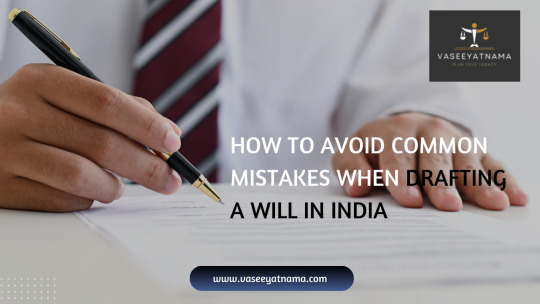
In this article, we'll explore how to avoid common mistakes when drafting a will in India, and we'll touch upon key aspects such as will registration and the importance of choosing the best will drafting company in India.
1. Not Clearly Identifying Assets and Beneficiaries
One of the most common mistakes in will drafting is failing to clearly identify assets and beneficiaries. Vague descriptions can lead to confusion and disputes. Be specific about what each beneficiary is to receive.
For instance, instead of saying "I leave my car to my son," specify the make, model, and registration number of the car. Similarly, clearly state the full names and relationships of beneficiaries to avoid any ambiguity.
Tip: Create a Comprehensive Inventory
Before drafting your will, create a detailed inventory of all your assets, including bank accounts, properties, investments, and personal belongings. This will help you ensure that nothing is overlooked and that each asset is allocated according to your wishes.
2. Not Updating the Will Regularly
Life circumstances change, and so should your will. Failing to update your will regularly can result in unintended consequences. Major life events such as marriage, divorce, the birth of children, or the acquisition of significant assets necessitate an update to your will.
Tip: Review Your Will Annually
Make it a habit to review your will at least once a year or after any significant life event. This will ensure that your will remains up-to-date and accurately reflects your current wishes.
3. Not Meeting Legal Requirements
A will must meet certain legal requirements to be considered valid in India. If these requirements are not met, the will can be contested and potentially invalidated.
Key Legal Requirements:
Age and Mental Capacity: The testator must be at least 18 years old and of sound mind.
Witnesses: The will must be signed in the presence of at least two witnesses, who must also sign the will in the presence of the testator.
Signature: The will must be signed by the testator or by someone else in the testator's presence and under their direction.
Tip: Consult a Legal Expert
To ensure that your will meets all legal requirements, it's advisable to consult a legal expert or use a reputable will writing service. They can provide guidance and ensure that your will is drafted in compliance with Indian law.
4. Ignoring the Importance of Will Registration
While will registration is not mandatory in India, it can provide an additional layer of security. Registering your will with the Sub-Registrar can help prevent tampering and ensure that the will is easily accessible after your demise.
Tip: Consider Registering Your Will
Discuss the option of will registration with your legal advisor. While it involves a fee, the benefits of having a registered will can outweigh the costs, providing peace of mind that your will is securely stored and recognised by authorities.
5. Choosing the Wrong Executor
The executor of your will is responsible for ensuring that your wishes are carried out. Choosing an unreliable or unsuitable executor can lead to complications and delays in the distribution of your assets.
Tip: Choose a Trustworthy and Competent Executor
Select an executor who is trustworthy, organised, and capable of handling the responsibilities. It's also a good idea to appoint an alternate executor in case the primary executor is unable or unwilling to fulfil their duties.
6. Overlooking Debts and Liabilities
Neglecting to account for debts and liabilities can create complications for your beneficiaries. Ensure that your will addresses how outstanding debts should be settled before the distribution of assets.
Tip: Include Provisions for Debts and Liabilities
Clearly outline how any outstanding debts or liabilities should be handled. This can include specifying which assets should be used to pay off debts or instructing the executor to settle debts from the estate before distributing the remaining assets.
7. Failing to Communicate with Beneficiaries
Surprising your beneficiaries with the contents of your will can lead to disputes and misunderstandings. It's important to communicate your intentions with your beneficiaries to manage expectations and reduce the potential for conflict.
Tip: Have an Open Discussion
Have a candid discussion with your beneficiaries about your plans. This can help prevent misunderstandings and provide an opportunity to address any concerns or questions they may have.
8. Not Using a Professional Will Writing Service
Drafting a will on your own might seem like a cost-saving measure, but it can lead to errors and legal complications. Professional will writing services have the expertise to ensure that your will is comprehensive and legally valid.
Tip: Hire the Best Will Drafting Company in India
To avoid common mistakes and ensure that your will is properly drafted, consider hiring the best will drafting company in India. Professional services can provide tailored advice, handle complex situations, and ensure that your will is clear and legally binding.
Avoiding common mistakes when drafting a will in India is essential to ensure that your final wishes are honoured. Remember, the best will drafting company in India can provide invaluable assistance in this process, ensuring that your will is free of errors and fully compliant with legal requirements.
Take the time to draft your will carefully and consult with experts to protect your legacy and provide peace of mind for yourself and your loved ones.
0 notes
Text
The New Creation In Christ And Benefits
The new creation in Christ was necessary as a result of the fall of Adam. From The beginning, man was created as a perfect being because God created man for himself. The fall of Adam caused the separation between God and man. The love of God for man from the beginning initiated the salvation process which gave birth to the new creation in Christ. Man was eternally condemned to death after the fall but God sent his only begotten son on a rescue mission to die on the cross, shedding his blood in place of man. The only requirement for salvation is to repent of your sin and accept the one who died in your place as your lord and savior.
What Is The New Creation In Christ
The new creation in Christ is a man that have cued into the salvation process offered by God to restore the fallen man back to his place in God, The new creation in Christ is the man that has believed in the salvation process, has repented of his sins and has taken Jesus as his lord and savior. Corinthians 5:17 Therefore if any man be in Christ, he is a new creature: old things are passed away; behold, all things are become new. The new creation in Christ is a man that is born again, the man that is born of the spirit. Note that the first birth was maternal birth which is of the flesh. The second birth is what produced the new creation in Christ. The second birth is the new birth which is of the spirit, it’s the rebirth of the spirit. It affects only the spirit, it’s the spirit that is born again, only the spirit is renewed. The new creation in Christ doesn’t renew the flesh. The new creation in Christ is being led by the spirit of God to live a godly life after salvation.

The New Creation In Christ And Benefits Therefore the product of the second birth is a complete new man, total new creation, a fresh person that never existed before. Everything that was found in the old man has passed away behold all things has become new.
A Reconciliation
2 Corinthians 5:18 And all things are of God, who hath reconciled us to himself by Jesus Christ, and hath given to us the ministry of reconciliation; The new creation in Christ is a Reconciliation between God and man. Jesus came to earth on a reconciliation mission, he died on the cross and she'd his blood as a testator. Therefore the blood of Jesus was used to reconcile man back to God. There can be no reconnection without reconciliation
A Reconnection
The new creation in Christ Is a reconnection of man to God. Man was completely disconnected from God after the fall of Adam because of sin. Once iniquity was found in man, God withdrew. The love of God connected us back in the new creation. That's why we must do everything to stop sin from disconnecting us again.

The New Creation In Christ And Benefits The new creations are the children of God, heirs of God, the custodians of God's inheritance. God personally gave birth to the new creation. We are God's beloved, angels are jealous of our position. Note that the angels aren't God's children. Why did God chose us as his children and not the angels? Angels were rather created to serve us. The new creation in Christ is a people that God is building up to attain perfection as believers
Special People
The characteristics of the new creation in Christ is completely different from the characteristics of the old man or creation. The old man was build on iniquity, it had the nature of sin, the old nature after the fall of Adam.
Specifically for Relationship
Look at how God related with Abraham. The bible said Abraham was the friend of God. Think of it, God is a friend to man. Even when man is not perfect, God will opt to be his friend? What will happen when we are perfect because surely he is taking us to perfection. Angels are perfect but God did not choose them. Therefore the new creation in Christ has the potential to live like God.
The Old Creation
The old creation lived according to the dictates of the flesh. The flesh is anti God, therefore the old Creation was against the ordinance of God. Of course we know that the old creation came from the disobedience of Adam. Therefore it was founded on iniquity. Foundation of the new creation.
An Elevation
The new creation in Christ is an elevation to a position. The new man is raised with Christ to sit together with Christ at the right hand of God in heavenly places, far above all principalities and power. The new creation in Christ is elevated from the physical realm to the spiritual realm, hence the ability to control emotions effectively.
Benefits Of Being A New Creation In Christ
God Will Live In You
As a new creation, you will have the privilege of God living in you. The presence of God is domiciled in every new creation. This is because God lives in them. The new creation in Christ are carriers of the word of God, and the word of God carries the presence of God.
4. Dominion And Authority
Man lost his dominion and authority after the fall of Adam. The new creation is the return of dominion and authority to man.
Characteristics Of The New Creation In Christ
Characteristics of the new creation in christ include; love, joy, peace, patience, kindness, goodness, faithfulness, gentleness, and self-control Corinthians 5:17 Therefore if any man be in Christ, he is a new creature: old things are passed away; behold, all things are become new.

The New Creation In Christ And Benefits 2 Corinthians 5:18 And all things are of God, who hath reconciled us to himself by Jesus Christ, and hath given to us the ministry of reconciliation; 2 Corinthians 5:19 To wit, that God was in Christ, reconciling the world unto himself, not imputing their trespasses unto them; and hath committed unto us the word of reconciliation.
10 Benefits of New Creation Experience
#1. You will have peace #2. You will be a child of God #3. You will live in dominion #4. You will live in authority #5. You will be able to relate with God #6. You will have access to the power of God #7. You have the potential to fulfill your destiny #8. God will be your father #9. GOD will protect you #10. You will be translated from the kingdom of darkness to the kingdom of light. Characteristics Of The New Creation Corinthians 5:17 Therefore if any man be in Christ, he is a new creature: old things are passed away; behold, all things are become new. 2 Corinthians 5:18 And all things are of God, who hath reconciled us to himself by Jesus Christ, and hath given to us the ministry of reconciliation; 2 Corinthians 5:19 To wit, that God was in Christ, reconciling the world unto himself, not imputing their trespasses unto them; and hath committed unto us the word of reconciliation. St. Matthew 19:28 And Jesus said unto them, Verily I say unto you, That ye which have followed me, in the regeneration when the Son of man shall sit in the throne of his glory, ye also shall sit upon twelve thrones, judging the twelve tribes of Israel. St. Matthew 19:29 And every one that hath forsaken houses, or brethren, or sisters, or father, or mother, or wife, or children, or lands, for my name's sake, shall receive an hundredfold, and shall inherit everlasting li 2 Corinthians 5:17 Therefore, if any man be in Christ, he is a new creature: old things are passed away; behold, all things are made new. 2 Corinthians 5:18 And all things are of God, who hath reconciled us to himself by Jesus Christ and hath given to us the ministry of reconciliation; 2 Corinthians 5:19 To wit, that God was in Christ, reconciling the world unto himself, not imputing their trespasses unto them, and hath committed unto us the word of reconciliation.
How Does One Become A New Creation?
You become a new creation by being born again, giving your life to Jesus. When you repent, turn from your old way of life and embrace the life of God. Born again is living the bible standard of life, living like God, according to the word of God.
Bible Verses About New Creation
2 Corinthians 5:17 Therefore, if any man be in Christ, he is a new creature: old things are passed away; behold, all things are made new. 2 Corinthians 5:18 And all things are of God, who hath reconciled us to himself by Jesus Christ, and hath given to us the ministry of reconciliation; 2 Corinthians 5:19 To wit, that God was in Christ, reconciling the world unto himself, not imputing their trespasses unto them, and hath committed unto us the word of reconciliation. St. Matthew 19:28 And Jesus said unto them, Verily I say unto you, That ye which have followed me, in the regeneration when the Son of man shall sit in the throne of his glory, ye also shall sit upon twelve thrones, judging the twelve tribes of Israel. St. Matthew 19:29 And every one that hath forsaken houses, or brethren, or sisters, or father, or mother, or wife, or children, or lands, for my name's sake, shall receive an hundredfold and shall inherit everlasting life.
Follow Us On Social Media

t





Read the full article
0 notes
Text
Mazma Rill - L’album “Lost in Space”
Il nuovo album dell’alternative rock band è finalmente fuori sugli stores digitali e a breve anche in vinile in Limited Edition

“Lost in Space” è il nuovo e attesissimo album dell’eclettica e poliedrica alternative rock band dei Mazma Rill, sui principali stores digitali e in vinile in Limited Edition. L’album è stato anticipato da ben tre singoli riportando plausi da pubblico e critica. Importanti i riconoscimenti ricevuti in questo ultimo anno di attesa e le molteplici pubblicazioni sulle maggiori testate nazionali di settore e non ne sono una piacevole conferma, come l’anteprima nazionale del videoclip di “Blow A Kiss” su Sky Tg24. A seguire il tormentone “No One” che mirava già ad una ricerca stilistica e a una rivoluzione sonora ben anticipata dalla struggente ballad, che contribuiva a far capire che le vecchie spoglie non erano state rinnegate, ma bensì evolute e lavorate con estrema cura e passione. Per poi concludere il lancio con l’omonimo singolo “Lost in Space” che sanciva il legame con una rivoluzione personale e musicale, solide basi per il proprio futuro artistico. Potente la magia di una band quando in pieno old style, crea con devozione e rispetto nelle centinaia di ore in sala prove e studi di registrazione a conferma di una ricercata e raggiunta professionalità. Gli arrangiamenti curati maniacalmente nel dettaglio, i mix di generi volti ad esplorare nuovi confini sonori e le tematiche nei testi, ancora più introspettivi ma contemporanei, premiano “Lost in Space” come il miglior lavoro discografico dei Mazma Rill che vantano oltre dieci anni di carriera, tra pubblicazioni e palchi in giro per l’Italia. Menzione d’onore anche per l’esperienza positiva nei riscontri, oltrepassando l’oceano per finire in magazine e radio americane che attendono ora questo nuovo album con estrema curiosità. L’album è stato registrato interamente presso lo storico Busker (Ligabue, Zucchero, Nomadi, Stadio, Nek, Ivano Fossati, Vinicio Capossela, Negrita, Modena City Ramblers e molti altri) sotto l’esperta direzione di Fabio Ferraboschi.
Ascolta l’album
“Lost in Space riflette l’incertezza che stiamo vivendo in questo periodo storico. L’avvicendarsi di pandemie, guerre e cambiamenti climatici ci ha reso vulnerabili e, metaforicamente parlando, ci fa sentire smarriti come persi nello spazio proiettandoci nell’incertezza del futuro, nella fragilità della propria condizione sociale e in uno stato di insicurezza esistenziale.” Mazma Rill
Track By Track
Facebook: https://www.facebook.com/mazmarill
Instagram: https://www.instagram.com/mazmarill/
YouTube: https://www.youtube.com/@mazmarill
Web Site: https://www.mazmarill.it/
0 notes